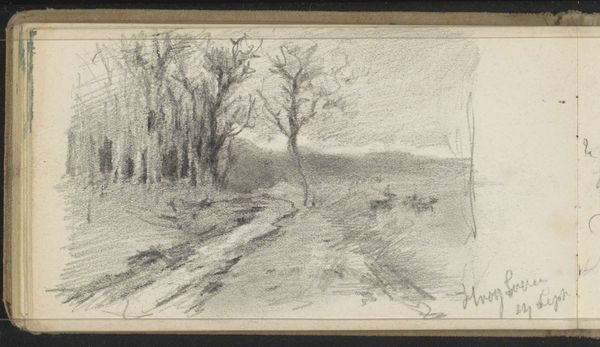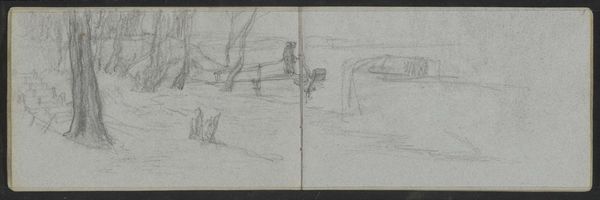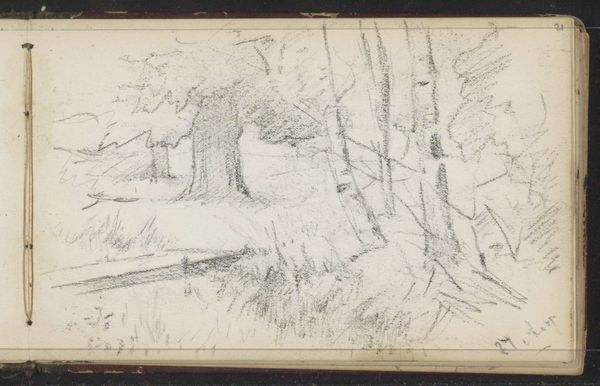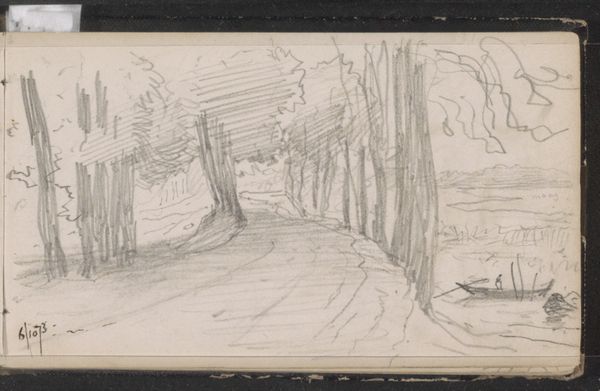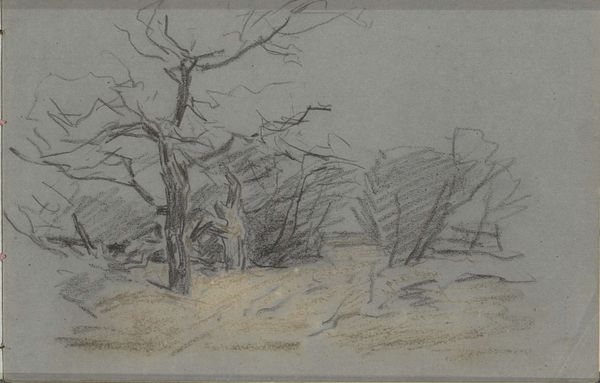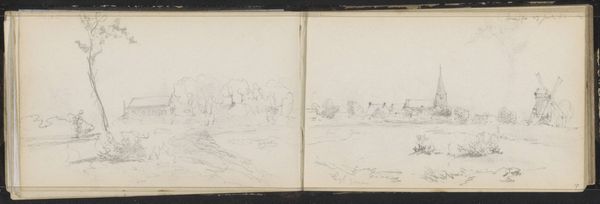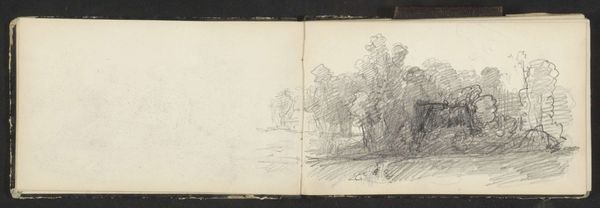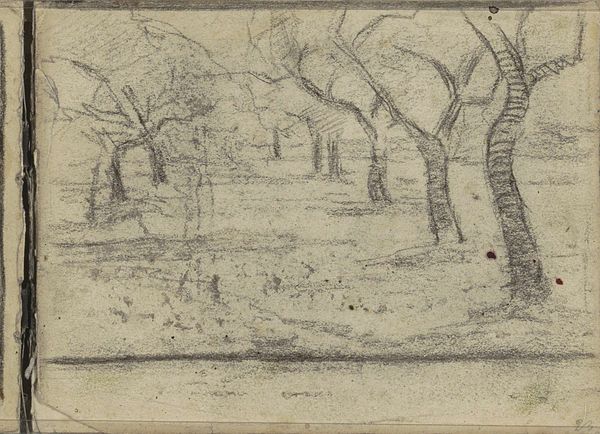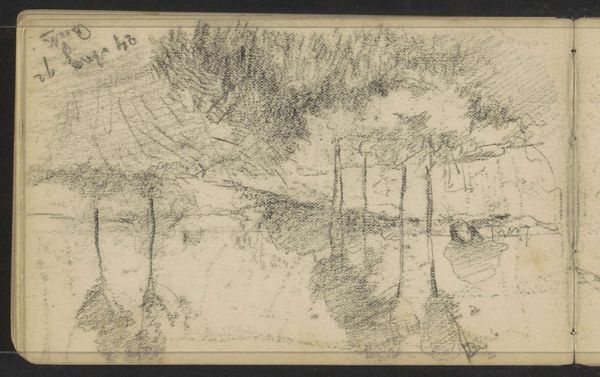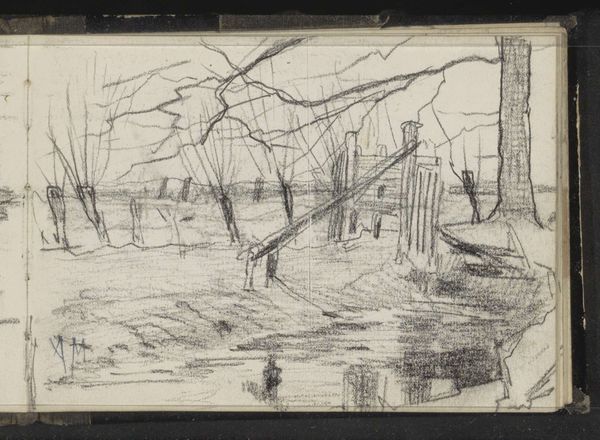
drawing, pencil
#
drawing
#
amateur sketch
#
light pencil work
#
impressionism
#
sketch book
#
incomplete sketchy
#
hand drawn type
#
landscape
#
personal sketchbook
#
pen-ink sketch
#
pencil
#
sketchbook drawing
#
sketchbook art
#
initial sketch
Copyright: Rijks Museum: Open Domain
Editor: This is "Landschap met figuren en bomen bij een waterkant," a pencil drawing by Matthijs Maris, sometime between 1849 and 1917. It's interesting - almost like two separate sketches side by side, with a very subtle, dreamlike quality. What stands out to you most when you look at it? Curator: For me, it's about understanding Maris within the context of 19th-century social shifts and the burgeoning art market. These loose sketches, these ‘impressions’ weren’t just aesthetic exercises. Who had access to landscapes, to leisure? The figures here – barely present, almost spectral – who are they *allowed* to be in this space? Editor: That’s a great question, and the sketchiness really lends itself to that interpretation. Are you saying it highlights a kind of social invisibility? Curator: Precisely. Maris often explored themes of isolation and alienation in his work. Consider how the composition divides the scene, almost like fractured realities. On one side, a possible industry: the water, boats. The other is the almost complete darkness of the woods. Editor: It does feel like a separation, maybe of labor and rest? I hadn’t thought about it that way. Curator: And doesn't that contrast speak to broader socio-economic divides of the time? Think about who could afford leisure and artistic expression, and who was relegated to the background. How might the *viewer's* own social location affect what they "see" in this landscape? Editor: So the unfinished quality is less about lack of skill, and more about a commentary on visibility and social class. Curator: It's both! His artistic skill is evident, yet he intentionally uses a raw, incomplete style. Consider, then, how this very incompleteness empowers the viewer to engage with the artwork's critical dimensions. What are your final thoughts? Editor: I think I was initially drawn to the simplicity, but now I see a lot more complexity in this 'simple' landscape drawing. Curator: Absolutely! It becomes more than just a pretty picture; it is an artifact reflecting social structures, access, and the very act of seeing.
Comments
No comments
Be the first to comment and join the conversation on the ultimate creative platform.


